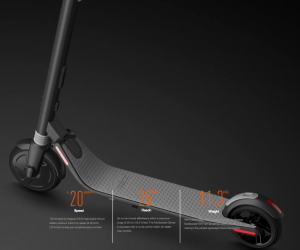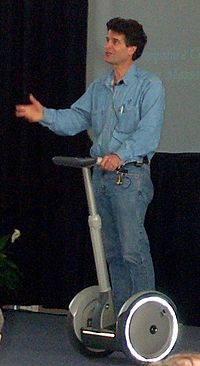 This last Christmas one of the hottest gift ideas has been the electric scooter. These devices costs a few hundred euros, have a range on the order of 20 km and look like they are a lot of fun. Analysts are also optimistic about the technology’s promise as an important answer to urban mobility.
This last Christmas one of the hottest gift ideas has been the electric scooter. These devices costs a few hundred euros, have a range on the order of 20 km and look like they are a lot of fun. Analysts are also optimistic about the technology’s promise as an important answer to urban mobility.
To that end three U.S. companies Bird, Lime, and Spin are quickly expanding to cover the market, Like the Chinese bike sharing company Ofo, these companies operate by getting deposits from customers which then are used as they ride the scooters. There are no fixed locations and you can find the devices all over the city, scan the bar code and go for a ride.
Uber has invested in Lime and Ford has purchased Spin showing how mainstream these devices are perceived.
I am writing this morning from Lisbon and they are everywhere.
An interesting aspect to the business model is that the scooters are charged overnight by regular people who get paid by the companies to pick up the scooters, charge them, and put them back in circulation. While there has been some negative press about this practice, the model does seem to be working well for some people. The Financial Panther, a blogger, describes how it works here.
Another interesting part of the story is that many of the scooters are manufactured by the same company, Ninebot Segway, based in Beijing. Bloomberg published a profile of the firm in December which has attracted investment from China’s high tech venture capital companies as well as Sequoia Capital.
Ninebot actually purchased Segway in 2014 and are behind a number of very cool products including the Ninebot one, which they call an electric unicycle, the new Segway drift which is like electric roller skates and a small robot which you can either ride or have it follow you around called the Loomy.

All of this electric mobility may be a fad but it might also be the start of a profound transformation of urban mobility. Perhaps the future will be made up of taking advanced solutions like the hyperloop when we travel between cities and then switching to a scooter or Segway device in order to get where we are going.
Dean Kamen invented the Segway in the 1990s and brought the first version to market in 2001. The company he founded had a number of ups and downs over the years before being acquired by Ninebot.
Kamen, however, had a vision of how electric mobility could change the face of the world’s cities for the better. That vision is now part of the blueprint for many cities, including Madrid, around the world who are, to a large degree at the forefront of environmental sustainability. This shows how long it sometimes takes for real innovation to work its way into the world.
Walking, of course, is even more sustainable, but in a city like Lisbon, which seems to have an endless supply of hills, Electric mobility makes a lot of sense.
I have already downloaded the Lime App and looking forward to trying one out!

